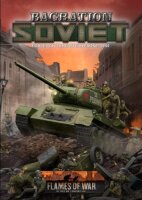Tetrarch Light Tank
(BR004)
A17 Light Tank Mk VII Tetrarch
The Tetrarch tank was originally designed as a replacement for the Light Tank Mk VI. Like its predecessor it was built and designed by Vickers Armstrong, with design work starting in 1937. On completion it went into trials in 1938 and was accepted into service with the British army, but not immediately into the light tank role.
Production started in the middle of 1940 and first deliveries took place in November. Production was continuous (though delayed by bombing of the Metro-Cammell works) and ceased in the first quarter of 1942. The Army decided to accept the limited number of Tetrarchs available and rely on American production of the Locust to fulfil future needs. It was armed with a 2pdr gun with a coaxial machine-gun in it’s turret. The turret was actually the same as that used by the Daimler Armoured Car. Some vehicles were fitted with an additional drum fuel tank on the engine deck rear. Some vehicles were also fitted with the Littlejohn adaptor, an addition to increase the muzzle velocity of the 2pdr to give it better anti-tank performance. Some Tetrarch light tanks were armed with a 3” howitzer for close support work. It used a skid steering system that involved pivoting the wheels to make the tracks flex and the centre wheels would move in or out to bow the track. It was controlled by a steering wheel. However, if the driver needed to execute a very sharp turn, he could use either of 2 levers to apply the brakes. It first saw combat during the invasion of Madagascar, supporting the invasion to retake this French colony in May 1942.
Three Special Service Squadrons of tanks were formed in 1942; the third of these became the Airborne Light Tank Squadron RAC and joined the 1st Airborne Division. When the 1st Airborne Division’s Recce Squadrons went to Africa the Airborne Light Tank Squadron was transferred to the newly formed 6th Airborne Division. This Squadron was armed with the Tetrarch. The Hamilcar Glider was designed to carry the Tetrarch. During the Normandy invasions one squadron of the Airborne 6th Armoured Reconnaissance Regiment landed in 30 Hamilcar gliders on June 6, 1944 in the second wave to support the 6th Airborne Division at the River Orne.
Eighteen to twenty Tetrarch tanks left Britain, a few were damaged on landing in Normandy, but the bulk went into combat supporting the Paras on the ground. In Normandy the Tetrarchs were in more or less continuous use until replaced by the 8 Cromwells prior to the breakout. The Tetrarchs in the squadron and regimental HQs were retained for a time to serve alongside the Cromwells.
Specifications
Crew: 3 (commander, gunner, driver)
Weight: 16,800lb
Dimensions: Length 13ft 6ins; Height 6ft 11ins; Width 7ft 7ins
Armament: Main: 2pdr QFSA (3in howitzer in MkI CS); Secondary: 1x7.92mm Besa MG
Traverse: 360º
Engine: Meadows 12cyl. 165hp
Max speed: 40mph (28mph cross country)
Ammunition stowage: 50 rounds 2pdr; 2025 rounds 7.92mm
In Flames Of War
The Airlanding Armoured Recce Platoons landed in Normandy with Tetrarch light tank on 6 June 1944. Each Platoon had 4 Tetrarchs. Up to two tanks can be fitted with Littlejohn adaptors and the command tank can be armed with a 3” howitzer. The Tetrarch is Fully Tracked and had Front Armour 1, Side 1 and Top 1. As a Light Tank it can move up to 16”/40cm cross-country. In addition to its co-ax machine-gun it is armed with either the OQF 2 pdr gun (Range 24”/60cm, ROF 2, AT 7, FP 4+), OQF 2 pdr gun with Littlejohn adaptor (Range 24”/60cm, ROF 2, AT 9, FP 5+, No HE) or the OQF 3” howitzer (Range 24”/60cm, ROF 2, AT 5, FP 3+, Smoke).
15mm, resin/metal
Battlefront Miniatures
Angaben zur Produktsicherheit
Herstellerinformationen:
Battlefront Miniatures Europe Ltd
Tissington Close Unit 4C
Nottingham, Vereinigtes Königreich, NG9 6QG
customerservicerow@battlefront.co.nz
https://www.flamesofwar.com/
verantwortliche Person:
Frontline Games
Faerbereiweg 3A
Schleswig-Holstein
Huetten, Deutschland, 24358
info@frontlinegames.de
https://www.frontlinegames.de/










